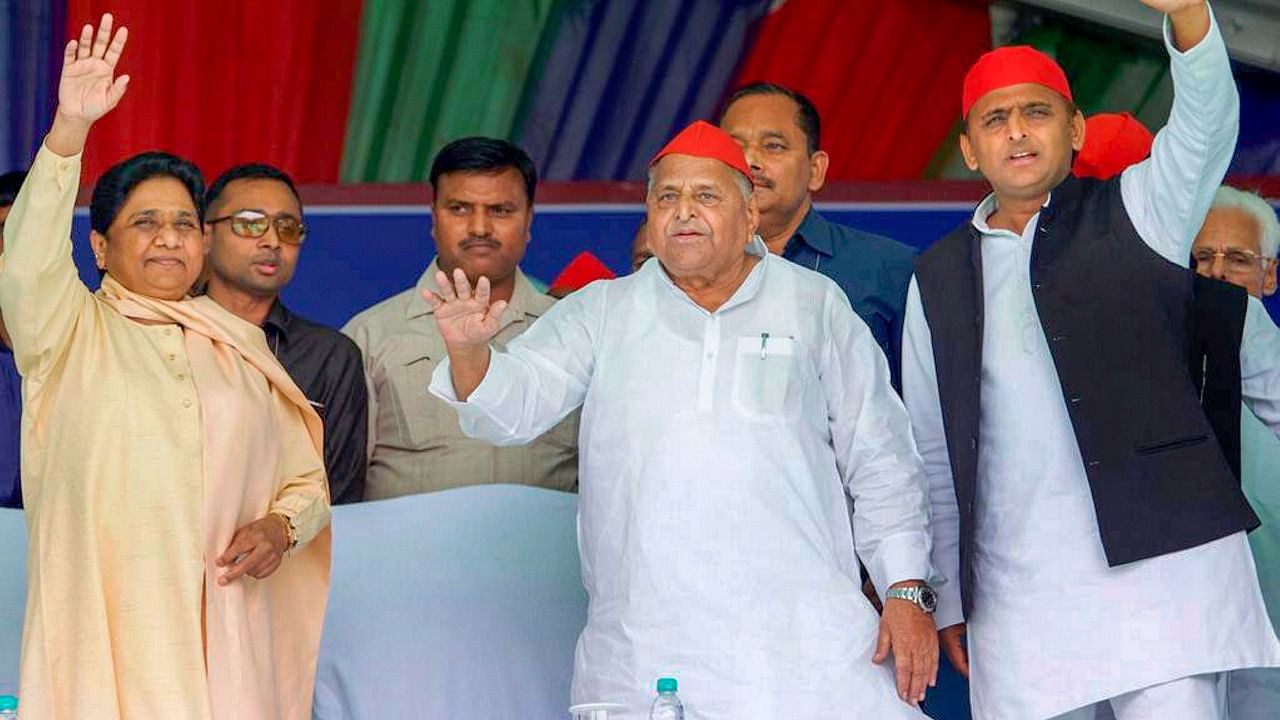
You can call it the rise of regional parties as the momentum gradually builds up for the 2024 Lok Sabha polls through the just concluded bye-elections and the upcoming Assembly polls in seven states next year. Despite the oft-repeated talks of the country gradually moving towards a two party system and the ruling BJP scaling up its numbers to acquire the position what Congress used to in the 1980s and before, the regional parties have time and again proved they are in for a long haul.
While the Dravidian politics in Tamil Nadu has ensured elections there to be a bilateral affair between DMK and AIADMK with both major national parties-Congress and BJP remaining marginal players, other state parties such as the TDP in Andhra Pradesh, TRS in Telangana, TMC in West Bengal, Shiv Sena and NCP in Maharashtra, BJD in Odisha, SP and BSP in UP, RJD and JD(U) in Bihar and AAP in Delhi are here to stay.
While Congress is piggy riding RJD in Bihar, Shiv Sena-NCP in Maharashtra and DMK in Tamil Nadu, BJP is dependent on Jananayak Janata Party for its government in Haryana and also has to be content with the Chief Ministership of Nitish Kumar from JD(U) in the alliance government in Bihar, despite having more number of seats in Assembly than the JD(U).
That both the national parties have to be cognizant of this reality of the existence of the regional parties’ space, is something that rings loud after the results of the recent Assembly and Lok Sabha bypolls in which Congress, BJP and Shiv Sena won one each of the three Lok Sabha seats. Among the Assembly seats, while regional parties YSRCP, INLD, JD(U) managed to retain their seats in Andhra Pradesh Haryana and Bihar, respectively, BJP ally NPP wrested two seats from Congress in Meghalaya, and MNF won two in Mizoram contesting against another regional party Zoram Peoples’ Movement.
The upcoming assembly elections to UP, Uttarakhand, Punjab, Goa and Manipur early next year, could attest further to the growing clout of regional parties. Delhi’s ruling party AAP, which has made both the national parties BJP and Congress almost irrelevant in the national capital’s electoral outcomes, is trying to expand its footprint far and beyond, pitching big in Punjab and Uttarakhand as well as far off Goa. Initial indications suggest AAP is on firm footing in Punjab and could repeat the 2014 Lok Sabha poll performance when it had won five Lok Sabha seats there.
The confidence of the Samajwadi Party to say “no” to alliance with bigger parties in UP even as Priyanka Gandhi is leading the Congress campaign there (the two had allied in 2017 Assembly polls), stems from the realisation that alliance with smaller regional parties is more fruitful. Hence, SP leader Akhilesh Yadav chose to tie up with Rashtriya Lok Dal, Om Prakash Rajbhar’s SBSP and Shivpal Yadav’s Pragatisheel Samajwadi Party (Lohia). After a number of leaders from Congress, BSP and also BJP joined his party, Akhilesh asserted that induction of leaders from other parties will continue. It shows that people are seeing the SP as an alternative to the BJP.
Cong’s strike rate
In Bihar, RJD chief Lalu Prasad strongly defended his decision not to allot to Congress any seat in the bypoll saying Congress could have lost deposit there. After failing to come to power in the 2020 state polls in alliance with Congress, whose strike rate was low, RJD is now inching closer to Chirag Paswan-led LJP faction and seems preferring the SP route for future elections. Congress had fought 70 assembly seats then but had won less than 20 seats, which led the RJD to accuse it of ‘arm-twisting’ and ‘spoiling’ victory chances of the Mahagathbandhan.
Also Read | Do regional parties come together?
TMC’s Mamata Banerjee, who made a hat-trick of winning state polls this year is emerging a prime challenger to Narendra Modi-led BJP and is seeking to go beyond West Bengal, pitching big for Goa and Tripura, having inducted leaders from Congress like Luizino Falerio (former Goa CM) and Sushmita Dev (former Congress MP and daughter of former Union Minister Santosh Mohan Dev). TMC has been repeatedly taking a dig at Rahul Gandhi, the most recent being reminding the party of Gandhi’s defeat in Amethi in the 2019 Lok Sabha polls. Her party won all four assembly seats in the bypoll, snatching two from the BJP. What was more significant was over 75% of the total votes it secured. Congress veteran late Kamalapati Tripathi’s grandson and great-grandson also recently joined the TMC in UP. “Those who label the TMC as a regional party should keep in mind that every party has a place of origin,” she said, reminding that “the Tripathis are from UP”. TMC national general secretary Abhishek Banerjee has asserted Banerjee is the “only vaccine” for BJP “virus”.
The tussle with Congress is evident with former Union Minister P Chidambaram dismissing the foray of TMC and AAP in Goa as “marginal players” while BJP dismissed their visits as “political tourism”. However, the regional aspirations have a reason and a resonance with kind of a fatigue setting among the electorates against both the parties, who have ruled these states alternatively. With the BJP behemoth tottering and Congress on decline due to loss of local leaders and internal fight at the top, the rise of regional parties could be a warning signal.
In Haryana, BJP is now dependent upon a breakaway faction of the Om Prakash Chautala’s party led by Dushyant Chautala and renamed JJP, for the survival of its government. In Punjab, former NDA ally SAD has tied up with another regional party BSP, which has influence area mainly in UP but hopes to be a game changer in Punjab as well with the state having a Dalit population of around 33%. In Maharashtra, regional party Shiv Sena is leading an alliance government in which the national party Congress is a junior ally with another regional party NCP having more numbers than it.
Interestingly, in states where regional parties have formed government, both the BJP and the Congress have found difficult to come back - be it Tamil Nadu where there was no Congress government since 1987, Uttar Pradesh, where the last Congress CM was in 1988 and BJP had to take a 26-year break between 1991 and 2017 with SP and BSP alternating to power, Bihar where the last Congress government was in 1989 and BJP could never have a CM despite NDA ruling the state with Chief Ministership alternating RJD and JD(U). BJP has been out of power in Delhi since 1998 and Congress since 2013 after Arvind Kerjiwal became Chief Minister.
Check out latest DH videos here
Deccan Herald is on WhatsApp Channels| Join now for Breaking News & Editor's Picks
